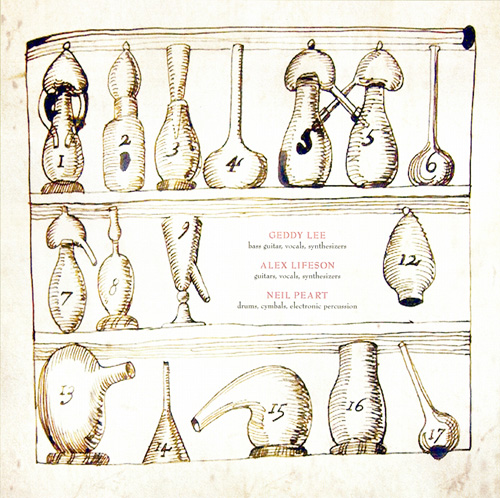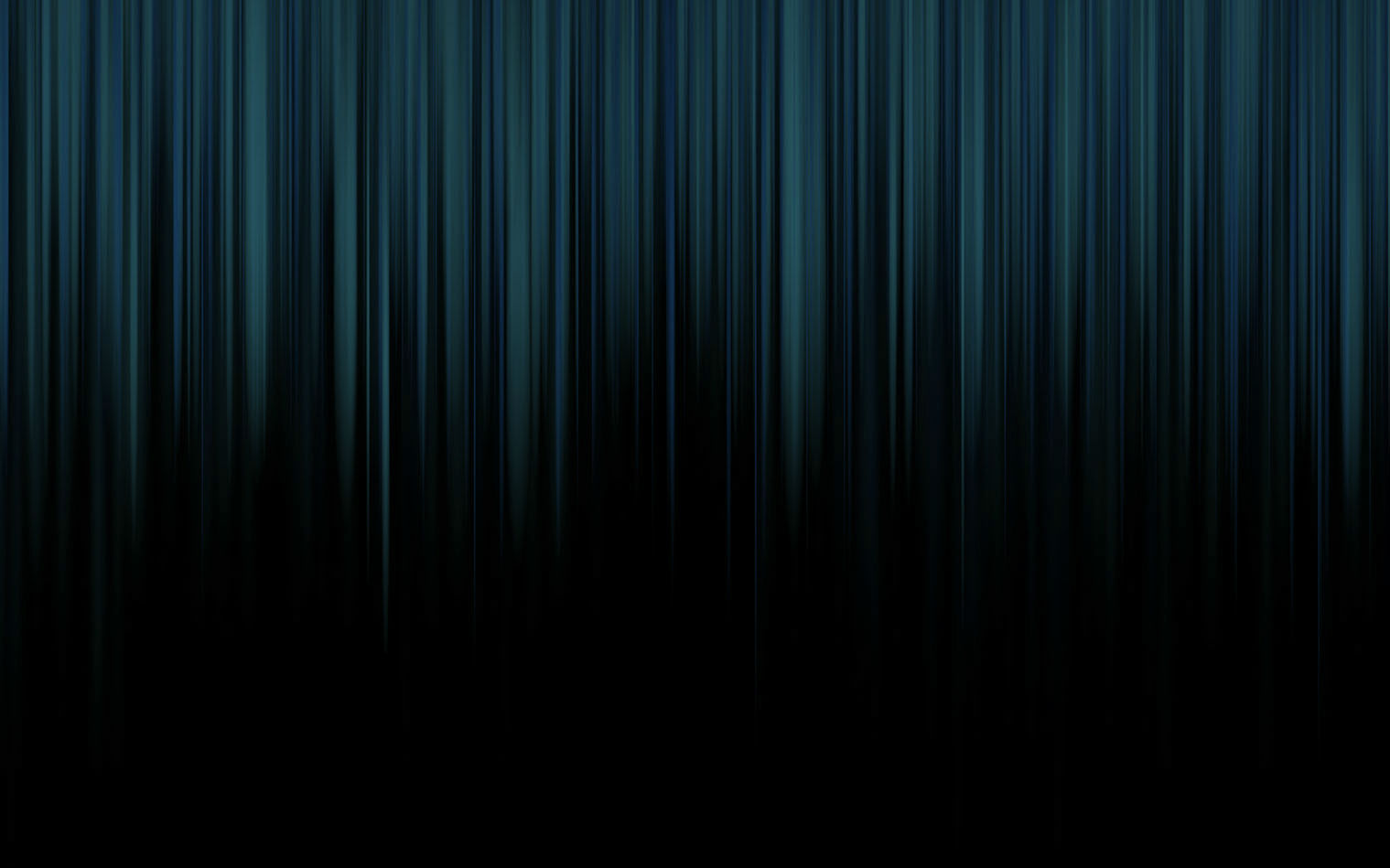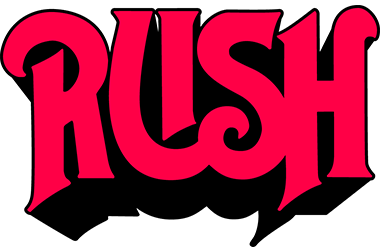TIME MACHINE 2010-11 TOŒR
TOŒR BOOK
The "Time Machine" Tour spanned from June 29th through October 17th, 2010 and March 30th through July 2nd, 2011
The Future As It Ought To Have Been
By Neil Peart
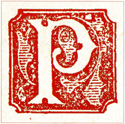 ast, present, and future all come together on this stage-sometimes in the most unlikely ways.
ast, present, and future all come together on this stage-sometimes in the most unlikely ways.
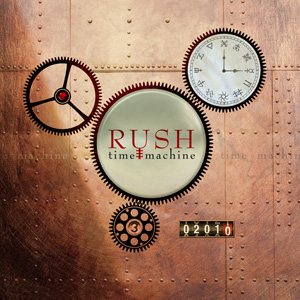
The story began last December, when the three of us met in Los Angeles with our Snakes and Arrows coproducer, Nick ("Booujzhe") Raskulinecz, to talk about the coming year. We had deliberately not discussed any plans before that meeting, only agreeing that we wanted to do something together. We had several possible choices ahead, and we would outline them together and decide.
In late 2006 and early '07 we had recorded Snakes and Arrows, then toured in the summers of '07 and '08, and taken some time off in 2009. So far, so normal. Now the typical thing to do would be to start writing songs toward making an album, then launch a tour behind that in 2011 or so. However, these days an "album" is an abstraction dearer to artists than to audiences, and it didn't seem necessary to follow that timeworn pattern anymore. "Crisis is both danger and opportunity," goes the old Chinese saying, and we were kind of excited about doing things a different way.
We definitely wanted to work on something new, and talked about just writing and recording a couple of songs. We could follow the wishes of our manager, Ray, and do a little touring in 2010 as well. Geddy brought up a project that has long appealed to him-collecting all of our instrumentals into one album, and perhaps writing a new one to go with them.
"Maybe something a little more extended," he said, and my ears pricked up. Years back, we had done our share of long works, lyrical concepts and instrumentals (always remembering the subtitle of "La Villa Strangiato" from 1978, "An Exercise in Self Indulgence"), but lately we had tended to make our songs, if not concise, at least more compressed. So that, for example, an instrumental like "The Main Monkey Business" on Snakes and Arrows was enormously complex, but worked through its movements in six minutes, instead of nine or ten.
At that suggestion, wheels started turning in my head. Now that we were talking about doing something a little more ambitious musically, I wondered if it wasn't time to think that way in terms of lyrics and concepts, too. The chorus line in "Caravan" seems apt: "I can't stop thinking big."
I told the guys about an idea for a fictional world that had interested me lately, thinking it would make a great setting, maybe for a suite of songs that told a story. A genre of science fiction pioneered by certain authors (including my friend Kevin J. Anderson) had come to be called "steampunk," seen as a reaction against the "cyberpunk" futurists, with their scenarios of dehumanized, alienated, dystopian societies. Our own previous excursions into the future, 2112 and "Red Barchetta," had been set in that darker kind of imagining, for dramatic and allegorical effect, but I was thinking of steampunk's definition as "The future as it ought to have been," or "The future as seen from the past" -as imagined by Jules Verne, for example, in 1866, when he was writing 20,000 Leagues Under the Sea.
When I was nine or ten, my dad took my brother and sister and me to see that movie at a Saturday matinee, and images from it had always stuck with me. The fearsome destructiveness of the Nautilus had a kind of monstrous beauty, contrasted with the cultured opulence of Captain Nemo's quarters, and the massive pipe organ on which, he played with mad rapture. The captain may have been insane, but it was a romantic, idealistic bind of madness-his mission was only to destroy ships of war, because his beloved family had been killed in wartime.
The guys seemed intrigued by the concept, and at home in Southern California, I started working on a story and some lyrics along those lines, set in a world driven by steam, intricate clockworks, and alchemy-"a world lit only by fire" (title of a history of medieval times by William Manchester). Early in January, 2010, I was able to send a bunch of pages of lyrics to Alex and Geddy in Toronto, and they got together in Geddy's home studio, "messing around," jamming and seeing what came out. Their individual temperaments are perfect for that approach-Alex the consummate improviser (you will hear him noodling on the guitar and play something great, then ask him, "Wait-what was that?," and he'll look up and say, "Um, I don't know"), and Geddy the patient editor and organizer, sifting through their recorded rambles for the best parts, then stitching them together into an arrangement. He would also look through my pages of lyrics for things that seemed to go together, then tweak the music to suit, and send me requests for lyrical alterations to fit the growing song.
In early March we met in Toronto at Geddy's house, and listened to the five songs they had completed. Booujzhe also came back into the picture at that point, delivering his opinions and suggestions for the work in progress, and together we decided to focus on two of the songs, "Caravan" and "BU2B" (the guys thought my original title of "Brought Up to Believe" was too unwieldy, so I found it musing to render it in modern social-networking textese). Those songs also happened to be the first two pieces of the projected story, now titled Clockwork Angels.
In April I returned to Toronto for two weeks, when we finalized the arrangements, and I started working out drum parts. With reference to the "compressed complexity" mentioned earlier, it is noteworthy that "Caravan" alone took me three days to learn just as "The Main Monkey Business" had. Playing through it time and again, gradually "absorbing" its bumps and wrinkles and smoothing them out, I was grumbling to my drum tech, Gump, about my bandmates' tendency to add and drop random beats here and there in the arrangement, whenever it suited them. "I do wish they could learn to count to four three times in a row!"
Then came Booujzhe. I have explained before that his nickname came from his habit of airdrumming outrageous fills, "Blappada-blappada, dubba-dubba-dubba, rat-a-ta-tat, booujzhe." (Onomatopoeia, like.)
He was soon at it again. In the middle of "Caravan" there was a linking section where Geddy and Alex did a climb down, then up again, and I had laid out of that part, just accentuating the downbeats between. In those spaces, Booujzhe started miming an absurd fill, tumbling all the way down the toms in triplet-feel flurries, then rising all the way back up again, to follow the guitar and bass. I just looked at him, incredulous. He gave me his usual comment, "Hey-I wouldn't ask if I didn't think you could do it."
Geddy looked up over his glasses and said drily, "He wants to make you famous."
I worked it out and played it, and Booujzhe got all excited. All I could say was, "I'm so ashamed."
Like the end section of "Far Cry," which Booujzhe had likewise encouraged me to solo over, it was not something I would ever have suggested myself, but it's one of the reasons we like having a guy like Booujzhe around-to push us, encourage us, make us do crazy stuff.
So now we needed a studio where we could properly record this new music. Part of the collateral damage in the decline of the established music industry has been that many recording studios have closed, and the only good room for recording drums we could get at short notice was in Nashville-Blackbird. However, as we put down the drum and bass tracks in the first two days, then moved on to overdubs and mixing for another ten days, it proved to be a great studio, and we loved the results.
During all this time, going back to January, we had also been planning the Time Machine tour-trading suggestions for old songs to resurrect, as well as dreaming up a whole new stage presentation. Inspired by artists like Steely Dan and Todd Rundgren who had recently been performing some of their older albums in their entirety, I suggested that it might be cool to do that with Moving Pictures-one of our most popular albums, we had never performed the whole thing before-had never played "The Camera Eye" live. [Webmaster note: "The Camera Eye" was in fact performed on both the Moving Pictures and Signals tours...]
Other recent tours have actually given us more freedom in choosing songs. After presenting such a broad retrospective on the R30 tour in 2004, we felt liberated from that "responsibility" on the Snakes and Arrows tour in 2007 and '08, and played more of the newer songs. This time we felt free of those, and along with adding our two new songs, "Caravan" and "BU2B," and the Moving Pictures set, we tried to find some unusual oldies to spark up the song list-for ourselves and for our fans.
The time machine was now set to past, present, and future.
While I put together some ideas for cover art with Hugh Syme, for the song releases and the tour, Geddy was working with his film collaborators Dale and Allan on the rear-screen movies, recruiting Alex and me as comedic "actors"-to pursue our long-term goal in live performance: "More Comedy, Less Music."
While we never seem to get away with "less music," it's true that as the years go by we do have more laughs.
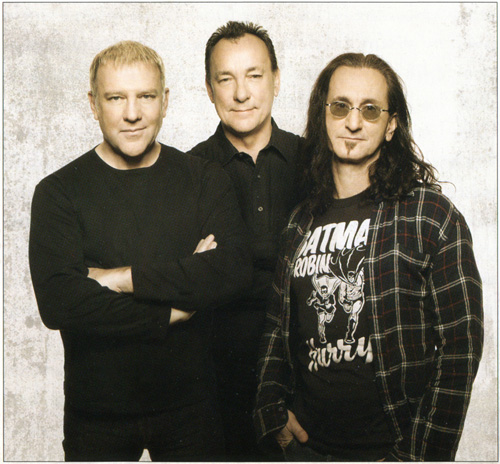
Liam Birt - Tour Manager & Tour Accountant
Craig Blazier - Production Manager
Karin Blazier - Production Assistant
Donovan Lundstrom - Road Manager
Brad Madix - Concert Sound Engineer
Howard Ungerleider - Lighting Director
Tony Geranios - Keyboard Technician
Jim Burgess of Saved by Technology - Programming
Lorne Wheaton - Drum Technician
John McIntosh - Bass Technician
Scott Appleton - Guitar Technician
George Steinert - Stage Manager and Carpenter
Kevin Ripa - Security/ Artist Liaison
Michael Mosbach - Security
Bruce French - Nutritionist
MANAGEMENT
Ray Danniels, SRO Management Inc. Toronto
Pegi Cecconi (QOFE), Sheila Posner, Cynthia Barry, Anna Le Coche,
Mehgan Symsyk, Bob Farmer, Andy Curran, Randy Rolfe
AUDIO COMPANY
Clair Global: Ralph Mastrangelo
Mattbew Stahlhut - Audio System Engineer
Brent Carpenter - Stage Monitor Engineer
Anson Moore - Monitor Systems Engineer
LIGHTING COMPANY
Premier Global Productions: Steven Anderson
Seth Conlin - Lighting Crew Chief
Joey Bradley - Master Electrician
Martin Joos - Lighting Technician
Bill Worsham - Lighting Technician
Matthew Tucker - Lighting Technician
RIGGING COMPANY
Five Points Rigging
John Fletcher - Head Rigger
Chuck Anderson - Rigger
Sebastien Richard - Motion Control
Art Direction, Design, Illustrations, and Horology - Hugh Syme
Band Photograpby - Andrew MacNaughtan
(Thanks to Stephen Alexander of Cumbrae's for Geddy's location.)
VIDEO SCREENS
Screenworks: Danny O'Bryen, Amy Segawa
David Davidian - Video Director
Bob Larkin - Video Engineer
William Duncan - LED engineer
Bruce Ramos - Camera Operator
Lindsey Haney - Camera Operator
FILMMAKERS
Allan Weinrib - Video Production Chief
The "Real" History of Rush Act 1 & 2
Directed by Dale Heslip/Electric Company Art & Design Inc.
Edited by Mark Morton/School
Opening animation by Ghostmilk
Alternate versions of "The Spirit of Radio" and "Closer to the Heart" arranged by Lou Pomanti
Presto
Edited by Jackie Roda/School
Stick It Out
Directed by Samuel Bayer
Re-edited by School
Workin' Them Angels
Directed by Christopher Mills
Faithless
Design and animation by Crankbunny/Electric Company Art & Design lnc.
Leave That Thing Alone
Design and animation by Derivative
BU2B
Concept: by Dale Heslip
Directed by Play Airways/Electric Company Art & Design lnc.
Subdivisions
Original Subdivisions footage directed by Grant Lough
Re-envisioned by Bienvenido Cruz
Moving Pictures
Design and animation by Crankbunny
Red Barchetta
Directed by Greg Russell/Tandem Digital
The Camera Eye
Directed & Photographed by Andrew MacNaughtan
Edited by Jackie Roda
Witch Hunt
Design and animation by Derivative
Caravan
Concept by Dale Heslip
Directed by Ghostmilk/Electric Company Art & Design lnc.
Love For Sale
Animation by Greg Russell and Brian Walters/Tandem Digital
Far Cry
Design and Animation by Steven Lewis/Spin Productions
I Still Love You Man
Written and directed by John Hamburg
Backline "amps"
Designed by Dale Heslip
Constructed by Mood Inc.
Time Tunnel Bumpers
Edited by Jackie Roda/School
Additional Steampunk Video Frames
Designed by Bienvenido Cruz
PYROTECHNICS
Pyrotek, Lorenzo Cornacchia
John Arrowsmith - Pyro Technician
BUSES
Hemphill Brothers Coach Company
Mark Larson
David Burnette - Driver
Lashawn Lundstrom - Driver
Marty Beeler - Driver
Joe C. Bush - Driver
John Morgan - Driver
TRUCKING
Ego Trips (Jim Bodenheimer)
Arthur "Mac" McLear - Lead Truck Driver
Jon Cordes - Driver
Tom Hartmann - Driver
Henry McBride - Driver
Julie Mennitti - Driver
Steve Mennitti - Driver
Don Johnson - Merch Driver
MERCHANDISING
Showtech, Pat McLoughlin
TOUR PROMOTER
Live Nation Global Touring
Gerry Barad
Keith Keller - Live Nation Global Tour Rep.
Booking Agencies: Artist Group International, NYC,
The Agency Group, London,
S. L. Feldman & Associates, Toronto
bass guitar, vocals, synthesizers
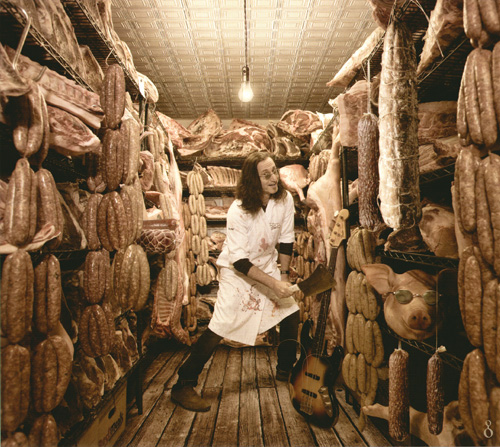
Click to Enlarge
| Well...my equipment... As always - the usual baloney... Fender Jazz Basses Kielbasa Chorizo Bratwurst-Wurtenberg Boudin Noir |
Sans-Amps Frankfurter Wurstel Salami Salsiccia stagionata Some keyboards Podhala n ska Szynkowa (smoked) Kulen Rotosound Strings Knackwurste |
Orange Amplifiers Cotchino Verde Toulouse Merguez Moogs Lincolnshire Polse Saucisson Cevapciéi Lukanec |
Thai-Panang Calabrese Haggis Leberwurst Lap Cheong Longaniza No vegetables were harmed in the making of this list ... well maybe a few |
guitars, vocal, synthesizers
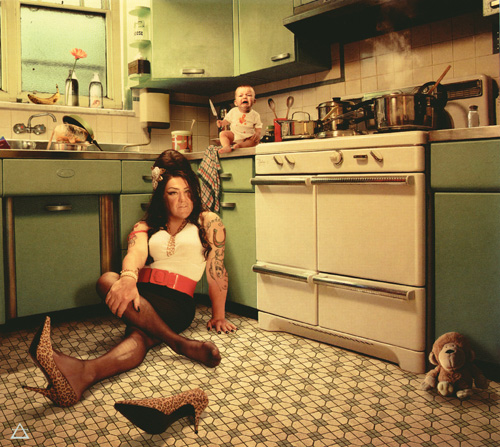
Click to Enlarge
TOUR EQUIPMENT LIST
A bunch of guitars in different colors, most with 6 strings but not always
Spunk Amplifiers
Some electrical stuff with blinking lights that Scott seriously stares at and shakes his head
Delicious steaks
Geddy's wine, mostly
Smelly stage clothes that don't start out that way
A bushel of iApples
A great golf swing
A horrible golf swing
Diet everything
drums, cymbals, electronic percussion
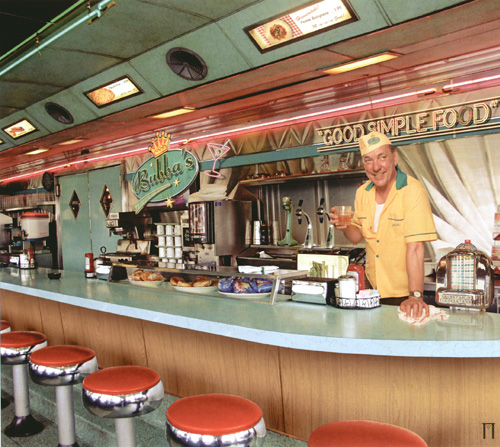
Click to Enlarge
Obviously the real time machine around here is the drumset.
And what a set of drums. Captain Nemo would have loved them, probably better than that dreary old pipe organ.
Drum Workshop really outdid themselves this time, spearheaded by Don Lombardi, John Good, Shon Smith, Garrison (like Madonna and Cher, he "dares to be known by one name alone"), hardware specialist Rich Sikra, and master painter Louis Garcia.
Barrel-stave redwood, copper leaf and silver alchemy symbols, and the innovation of copper hardware create the main visual statement, but the small, unique details of stand fittings and the little sculpted gears behind the lugs demonstrate DW's imaginative willingness to consider every possibility-and make it real.
Sonically, drum tech Lorne "Gump" Wheaton and I agree that these drums surpass all previous kits, in the richness of their tonality, and in the perfect blend of the individual drums with each other.
The custom stand fittings, drum hardware, and riser panels were designed by Greg Russell and Brian Walters of Tandem Digital. Their elaborate CG renderings of the kit and hardware helped to visualize the final outcome.
For their part, the Sabian cymbal company also got onboard with my wild ideas right away. Chris Stankee and Mark Love directed the development of a special steampunk design on the new "Brilliant" Paragons I've been using. (It took some experimenting with inks to find one that didn't affect the sound.)
Among other noisemakers, Gump and I include Pro-Mark sticks, DW and Remo heads, Roland V-Drums (thanks Darren Shoepp) (with custom DW shells), MalletKAT, KAT trigger pedals, and a Dauz pad, all running through a Roland XV5080 sampler and Project X Glyph hard drives.
